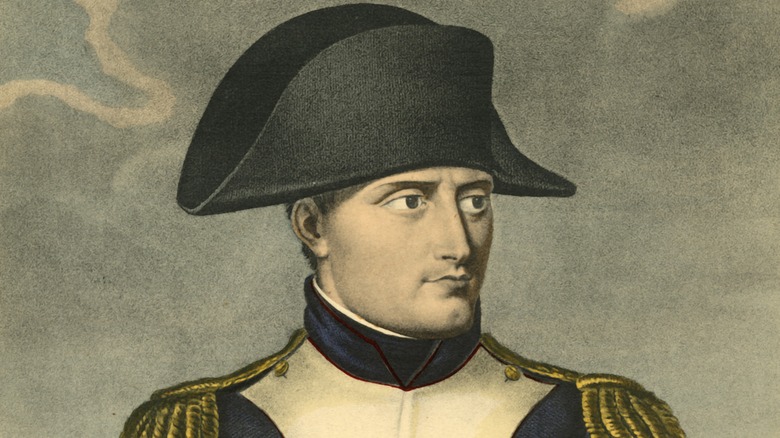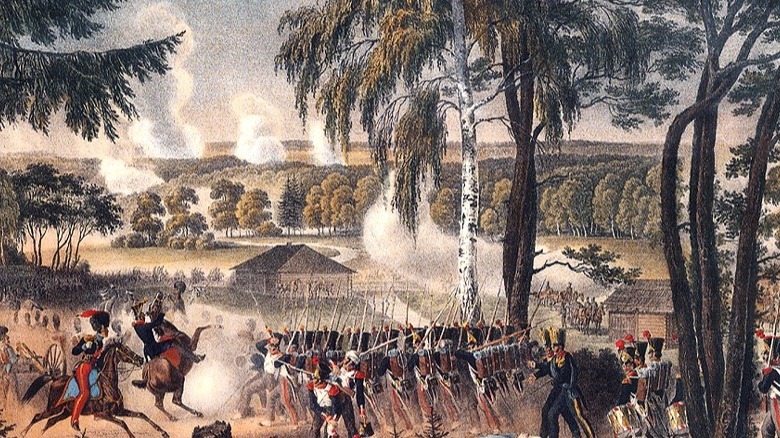The Grave Of Napoleon's One-Legged General Tells The Story Of Their Failed Russian Campaign
On the evening of Aug. 19, 1812, part of Napoleon Bonaparte's Grande Armée made another assault against Russian troops who had stopped to fight so the rest of their men under the command of General Barclay de Tolly could continue east to protect the road to Moscow. General Charles Étienne César Gudin and his division crossed the Kolodnia Creek in order to engage the enemy. He dismounted from his horse and sloshed his way through the water when a cannonball suddenly smashed into his legs, according to "A brief history of Napoleon in Russia."
The shell destroyed one of Gudin's legs and shattered his other calf, rendering him out of action, per FrenchEmpire.net. And while Napoleon's army claimed the Battle of Vautino as a victory, they lost 8,000 troops with little to show for it since Napoleon's chances of wiping out Barcley's army had faded, per "The Fall of Napoleon: An Historical Memoir, Volume 1."
A sign of things to come
Napoleon had General Gudin brought back to Smolensk, a Russian city 12 miles away occupied by his Grande Armée, where they amputated his mangled leg. Three days later, after contracting gangrene, Gudin died. Napoleon, who considered the general a friend, wept, according to CNN. As it would turn out, Gudin's death and the stumbles Napoleon made during the summer of 1812 were just the beginning of the issues for his Grande Armée, which began as a fighting force of at least 450,000 men from all over Europe, per History.
Napoleon's invasion of Russia, which began on June 24, 1812, marked the beginning of the end for him and his army. And the French emperor didn't really have a good reason for taking on Russia in the first place. By then, he controlled much of Europe and wasn't in conflict with the Russian empire over territory, but Czar Alexander I had defied the French embargo against their hated enemies, the British, which set the course for the ensuing slaughter.
Gurin's heart made it to France but his body remained in Russia
Napoleon had General Gudin's body buried in Smolensk park, but had his heart cut out to be taken back to France where it was interred in Père Lachaise Cemetery in Paris, per CNN and Radio Free Europe. Gudin, born in 1768, had been a lauded career soldier from a military family and fought with Napoleon throughout his European campaigns, according to "Once There Were Titans: Napoleon's Generals and Their Battles, 1800-1815." In 2019, a team of French and Russian archeologists recovered Gudin's remains, which were repatriated to France and buried in the Invalides war mausoleum in Paris, where Napoleon is also buried.
Less than four months after Gudin's death, what remained of Napoleon's Grande Armée stumbled back across the Russian border in defeat minus 300,000 men who died in the failed invasion, according to National Geographic. The crushing defeat emboldened Napoleon's enemies — Austria, Prussia, Russia, Sweden, and England — to go to war with France, with the eventual result of Napoleon's ouster from power, per History.


